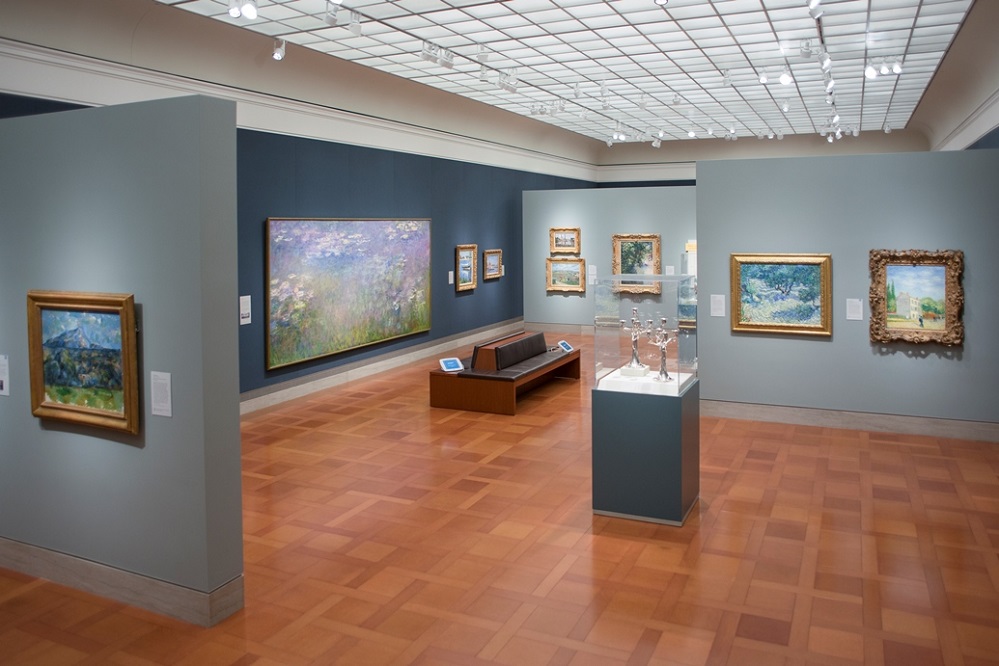Illuminating tips from the best in the business
artnet News, April 28, 2017
The joy of adding a new piece of artwork to your abode can often be overshadowed by the logistics of properly displaying it. Planning the installation of a new work is a vital part of its transition from the auction block to the living room wall, and wading through the possibilities is a daunting task. No matter if you are a newly minted collector or a seasoned expert, there are resources to shed light on the process—literally. You don’t have to be a professional lighting designer to showcase your collection, but by applying a few savvy techniques (and avoiding some pitfalls), your artwork can command the attention of your room the way it should. We’ve culled advice from the pros to help you bring your art into the warm focus it deserves.
The Beauty of LED Technology
Our aspirational case study is the Nelson-Atkins Museum of Art in Kansas City, MO, which is setting a new standard for enlightenment, with the newly unveiled Bloch Gallery wing. The galleries house works by luminaries of Impressionism and Post-impressionism, and the curators and technicians now have the capability to adjust the light depending on what would have been available at the time of creation, while also revealing new details that only intimate inspection could reveal. To that end, the lighting was replaced with transformative Ketra LED (light emitting diode) technology, a system that can be adjusted depending on how many visitors are in the room, and to replicate the natural rhythms of sunlight throughout the day. Many world-renown institutions are making the move toward LED lighting—bulbs that emit less heat and block ultraviolet light rays. These products are more expensive, but pay off in the long run, conducting more efficient energy, and saving your prized works from potential damage. The museum’s Director of Design and Experience, Steve Waterman, lauds his new tech-savvy system and points out that “the same combination of quality and control can be used in the residential space…home consumers can look for high-CRI lamp options, as well as networked and addressable fixtures for residential use.”
Create Ambiance, But Be Direct
When assessing your space, consider both the ambient and direct light that will surround the artwork. Ambient light is the general lighting of the room, which can be calculated easily if you know the dimensions of the room: width x length x 1.5 = wattage recommended. The suggested ratio between direct and ambient light is 3:1. Thus, the direct light source should be three times brighter than the ambient light. Creating layers of light will enhance the overall ambiance of the space, so feel free to mix and match techniques to suit the mood. To that end, use dimmers for as many fixtures as possible for adjustable levels.
Play the Angles
Art advisor Kristy Bryce points out that some of her clients “have beautiful light fixtures that hang from the ceiling and cast crazy patterns of light and shadows on the walls in all directions.” No matter how beautiful your fixtures are, make sure they are focused to highlight your artwork, not compete with it. The general consensus is that a 30-degree angle is optimal for the light beam projection onto the artwork—ideally, from a ceiling-mounted source, the light should be aimed at the center of the canvas. Evenly illuminate the work, especially for bigger pieces, opting for either a surface-mounted light or recessed lighting from above to ensure that there is a full distribution to prevent glare or annoying shadows.
Know Your Palette
Consider the color (or lack thereof) in your piece, and source materials accordingly. The Color Rendering Index is a scale ranging from 0–100 that measures how accurately a light source reflects color and intensity, as compared with a natural source, like sunlight. A higher CRI is more desirable, aim for anything 90 and above. Regarding the temperature (measured in Kelvin), 2000–3000K is the best range for art. This will emit a warm, soft-white glow that will accent the work without skewing the color palette.
3 Pitfalls to Avoid
No direct sunlight! Especially if the artwork is a delicate material (works on paper, mostly). If possible, aim for a wall that is north-facing, so it doesn’t get the brunt of the afternoon’s heat. Stay away from fluorescent bulbs—these will cast a garish glare. And avoid unsecured lighting: Vivian Ebserman, Director of Art Expertise at AXA Insurance company, advises caution when considering frame-attached lights, noting that in one instance, a “lighting apparatus attached to a frame somehow loosened, swung into the painting, and damaged it.”
This article was provided to you by Cocoweb, a lighting company specializing in LED picture lights.
Follow artnet News on Facebook.
